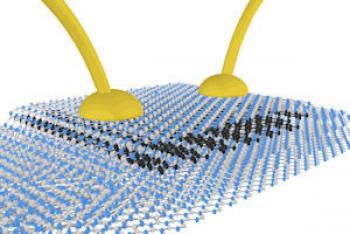Scientists at the University of Manchester demonstrated how tailored fabrication methods can make a variety of previously inaccessible 2D materials available - by solving the problem of their negative reaction in air.

To do that, the scientists protected the reactive crystals with more stable 2D materials like graphene, via computer control in a specially designed inert gas chamber environments. The technique allowed these materials to be successfully isolated to a single atomic layer for the first time. Combining a range of 2D materials in thin stacks gives scientists the opportunity to control the properties of the materials, which can allow materials-to-order to meet the demands of industry. It could allow for many more atomically thin materials to be studied separately as well as serve as building blocks for multilayer devices with tailored properties.
The researchers used this fabrication method on two 2D crystals that have generated intense scientific interest in the past year but are unstable in air: black phosphorus and niobium diselenide. The technique allows the unique characteristics and electronic properties of these air-sensitive 2D crystals to be revealed for the first time, and is regarded as an important breakthrough in the area of 2D materials research.